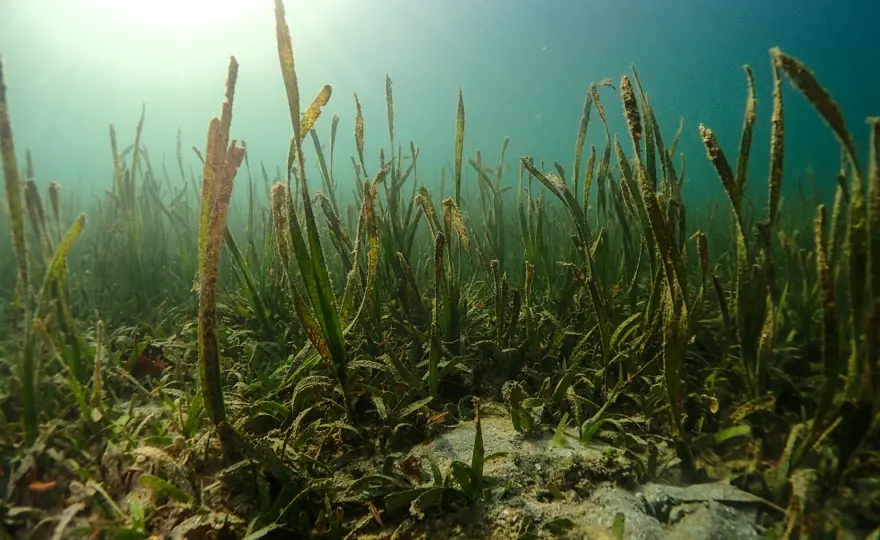ClientEarth Communications
2nd July 2021


Seagrasses don’t receive much attention, but they are one of the most productive ecosystem types on the Earth. They also have an incredible ability that helps fight climate change – a huge capacity for carbon absorption. Seagrasses act as a dense sediment trap, capturing carbon and storing it, eventually depositing it onto the seafloor.
Seagrasses are found in shallow salt water around the world, from the tropics to the arctic. They form dense underwater meadows that provide shelter and food to a hugely diverse community of creatures, from tiny invertebrates to fish, turtles, dugongs, endangered seahorses, crabs and even birds. Some of these meadows are so vast, they can be seen from space.
Seagrass accounts for 10% of the ocean’s capacity to store carbon, despite occupying only 0.2% of the sea floor. It can capture carbon from the atmosphere up to 35 times faster than tropical rainforests. In fact, one report by the Intergovernmental Panel on Climate Change (IPCC), observed that mangroves, salt marshes and seagrass meadows can store far more carbon per hectare than most terrestrial ecosystems.
Restoration of these meadows can count towards national climate change plans. This potential is even more significant when we consider that around 159 countries signed to the Paris Agreement have seagrass on their shores.
A hectare of this ancient, delicate plant can soak up 15 times more carbon dioxide every year than a similar sized piece of the Amazon rainforest.
Seagrass is remarkably long-living, partly due to its ability to reproduce by cloning itself, if the water temperature isn’t right for flowering. Research carried out in marine protected areas by the King Abdullah University of Science and Technology in Saudi Arabia discovered one clone that was estimated to have been produced by a seed that sprouted 200,000 years ago.
But with this long life comes slow growth, and in many parts of the world, seagrass simply cannot grow fast enough to combat its degradation caused by human activity and climate change. In the UK, up to 92% of our seagrass has disappeared in the last century. One area in the Baleriacs faces a continuing threat from boat anchors, which crush and tear through the meadows. The damage caused by one yacht’s anchor in a single day would take almost 1,000 years to restore.
Some fishing practices are particularly harmful for seagrass beds. Bottom trawling, which consists of weighted nets being dragged across the seabed, is one of the world's most destructive fishing techniques. Nothing escapes the vast nets: fish, crustaceans, but also seagrass beds. Wherever trawlers go, the ocean floor turns into a desert.
Seagrass has a crucial role in fighting climate change and bringing about nature’s recovery in the sea. We need to restore these habitats and stop trawling the bottom of the ocean.